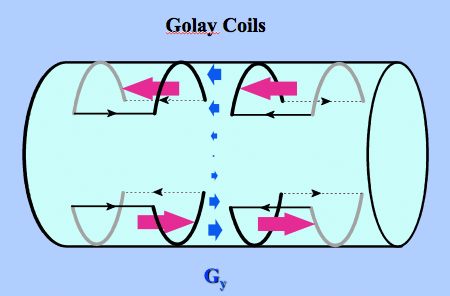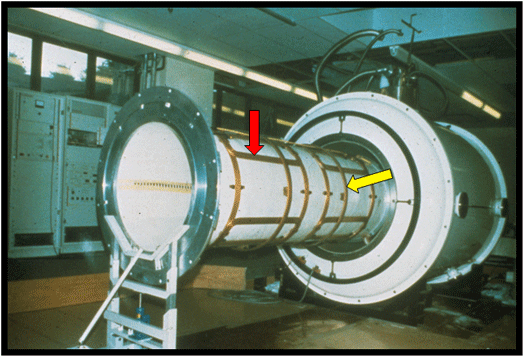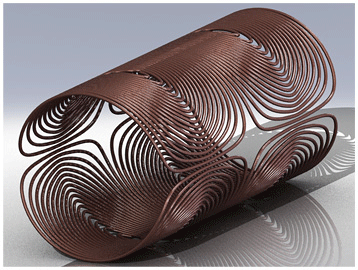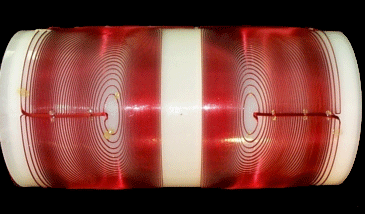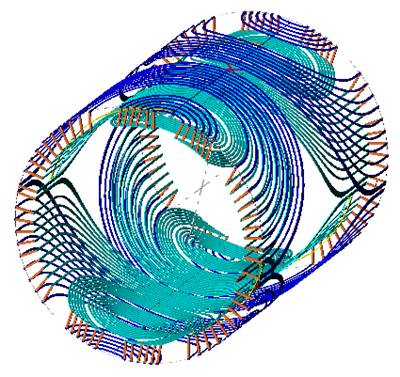|
|
The design for transverse gradients used in cylindrical MR magnets is based on a "double-saddle" coil configuration originally described in 1958 by Marcel Golay. The simplest form of this coil set consists of 4 inner and 4 outer arcs on the surface of a cylinder connected by 8 straight wires running parallel to the z-axis. The current along the inner arcs are primarily responsible for creating the required gradient, while the straight wires parallel to the z-axis serve as return pathways for current and do not contribute to the gradient field.
The homogeneity of the simple Golay configuration can be improved significantly by adding more arcs and curves. Nearly all modern MR scanners use some variation of a "fingerprint" coil design with distributed windings. Many advanced configurations have been developed, including bizarre- appearing 3D computer assisted designs. |
Advanced Discussion (show/hide)»
A few more notes about Golay Coils...
Although the 8 straight wires parallel to the z-axis in the Golay configuration cannot affect the z-component of the magnetic field (Bz), they do produce transverse components (Bx and By). These transverse components (not to be confused with x- and y-gradients, which are spatial derivatives of Bz) are called "concomitant" or "Maxwell" fields". Concomitant fields do not directly affect localization of the MR signal, but they do contribute to the total magnetic field experienced by the patient. Hence they must be taken into account when considering certain biological effects of gradients such as peripheral nerve stimulation.
Just like for Maxwell coils, formulas exist governing optimum placement and spacing of Golay coils based on the radius (r) of the cylinder. In general, best performance is attained when the coils are each of length 2.18r, subtend a 120° arc, with inner margins are separated by a distance of 0.78r. In this configuration the induced gradient deviates by less than 5% from linearity within a central sphere of radius 0.6r.
Carlson JW. Compact transverse magnetic gradient coils and dimensioning method therefor. United States Patent #4,755,755, July 5, 1988. (Contains a good discussion of Golay coil geometry and construction.)
Schenck JF, Hussain MA, Edelstein WA. Transverse gradient magnetic field coils for nuclear magnetic resonance imaging. United States Patent #4,646,024, Feb. 24, 1987. (Explanation of the fingerprint coil design and physics).
Golay MJE. Field homogenizing coils for nuclear spin resonance instrumentation. Rev Sci Instrum 1958; 29:313-316.
Hidalgo-Tabon SS. Theory of gradient coil design methods for magnetic resonance imaging. Concepts Mag Res Part A 2001; 36A:223-242.
Schmitt F. The gradient system. Understanding gradients from an EM perspective. Proc Intl Soc Mag Reson Med 2013; 21:1-13.

